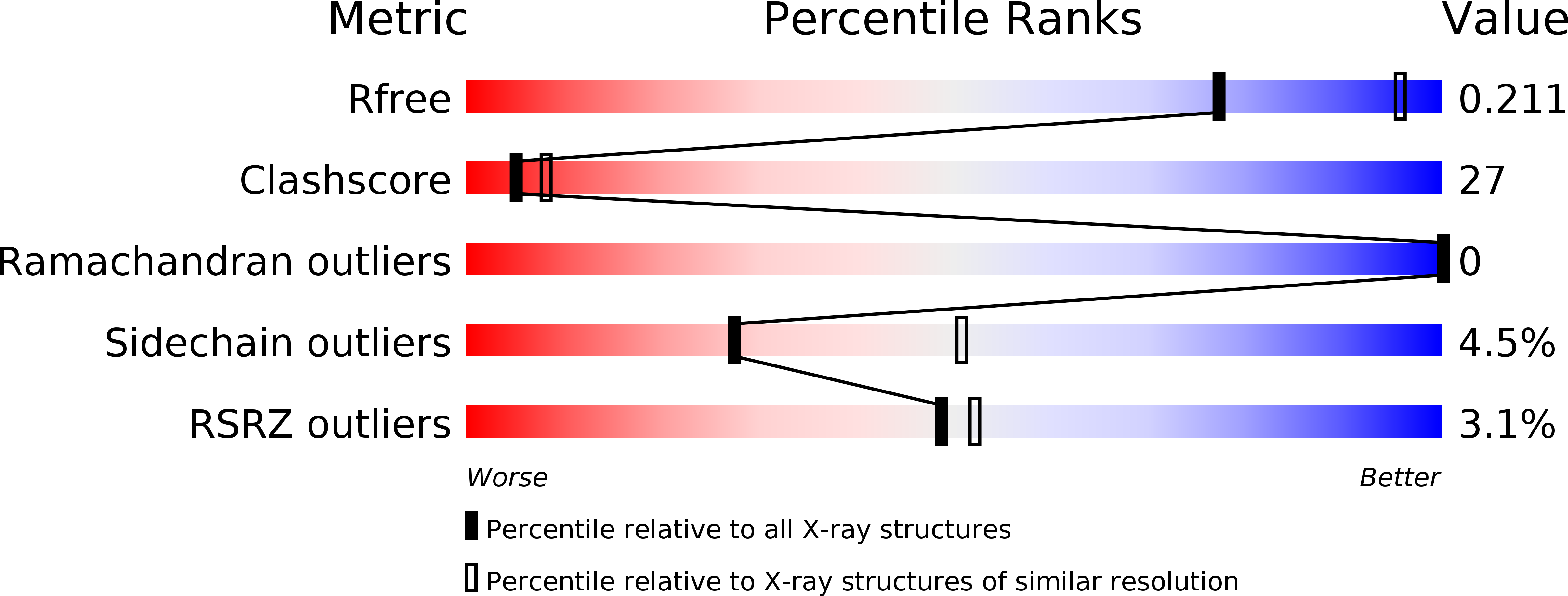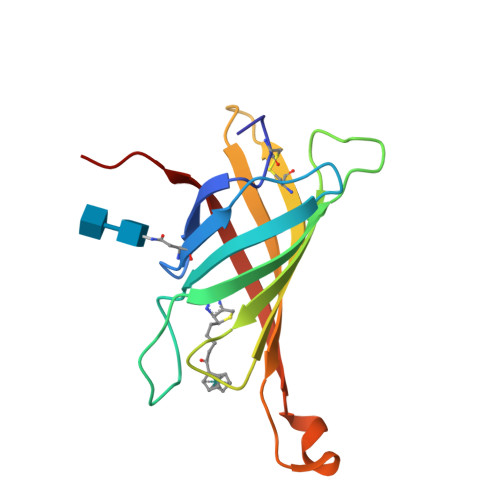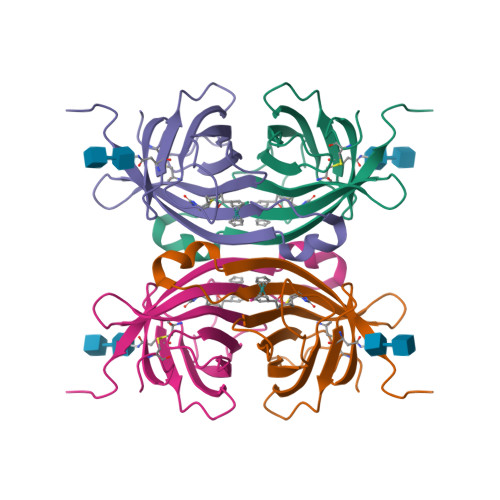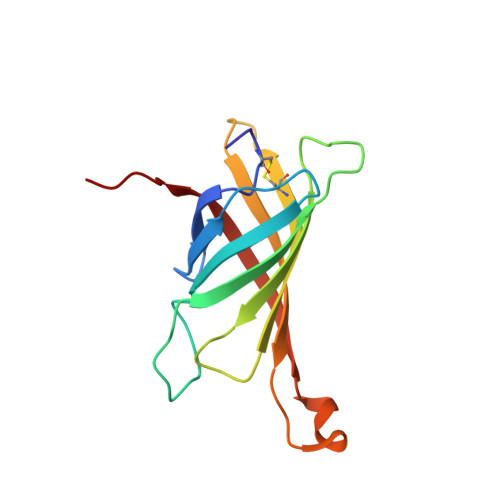Structural investigation of the interactions of biotinylruthenocene with avidin.
Strzelczyk, P., Bujacz, A., Plazuk, D., Zakrzewski, J., Bujacz, G.(2013) Chem Biol Interact 204: 6-12
- PubMed: 23603015
- DOI: https://doi.org/10.1016/j.cbi.2013.04.005
- Primary Citation of Related Structures:
4I60 - PubMed Abstract:
The crystal structure of avidin, a protein from hen egg white, was determined in the form of a complex with biotinylruthenocene. This biotin-derived organometallic ligand is a potential anticancer agent for targeted therapy based upon avidin-biotin technology. Isothermal titration calorimetry experiments, involving avidin complexes with biotin (vitamin H or B7) derivatives, show differences in their affinity to the protein in comparison to its avidin-biotin complex, the strongest known biochemical interaction in Nature. The crystal structure of the first complex of avidin with biotinylruthenocene, determined at 2.5Å resolution (PDB: 4I60), shows unique interactions of the ruthenocene moiety with avidin. Biotin derivatives exhibit weaker affinity to avidin then biotin, which allows their wider use in biotechnology. The specific properties of biotinylruthenocene and the knowledge of its interactions with avidin may be useful in biochemical, medical, and nanotechnological applications.
Organizational Affiliation:
Institute of Technical Biochemistry, Lodz University of Technology, 90-924 Lodz, Stefanowskiego 4/10, Poland.


















